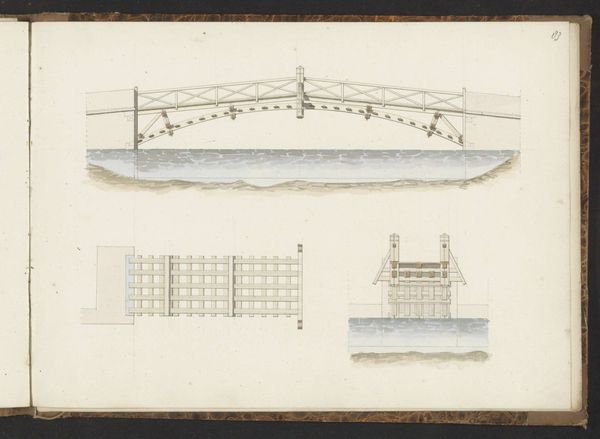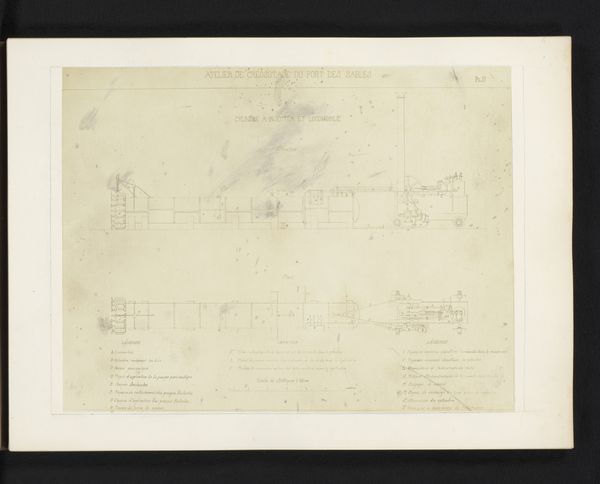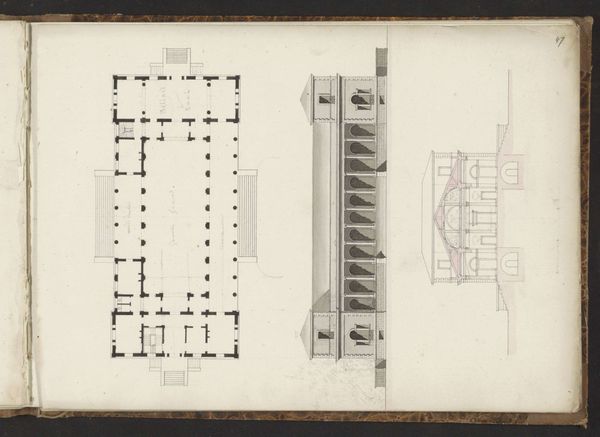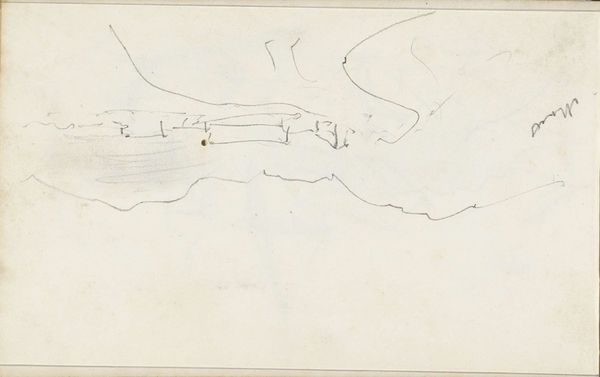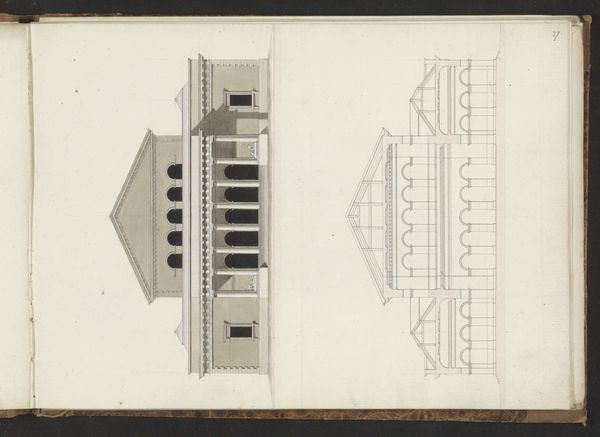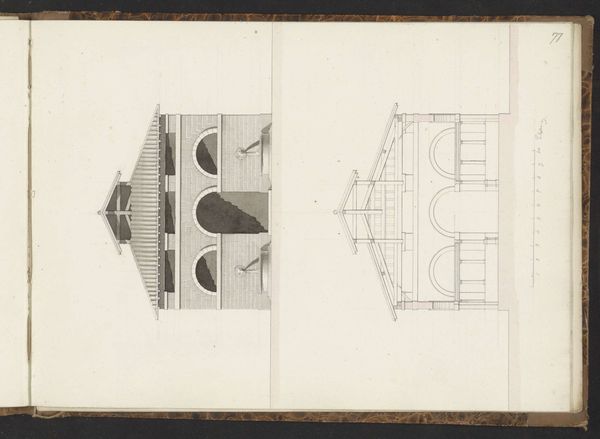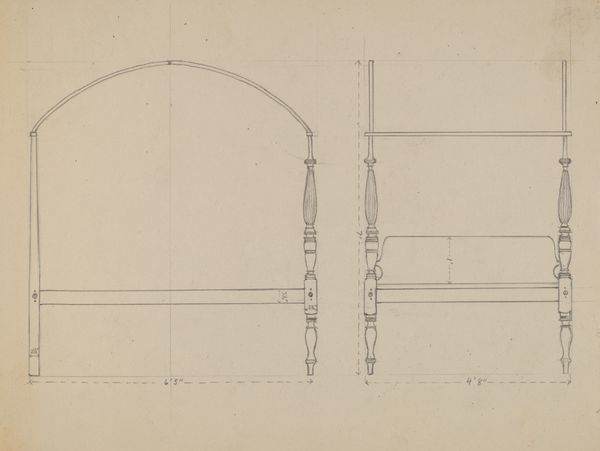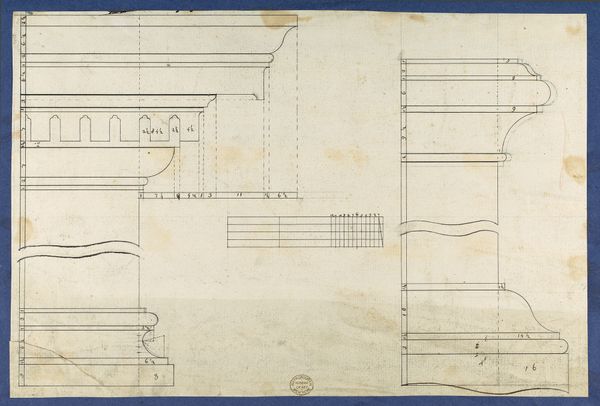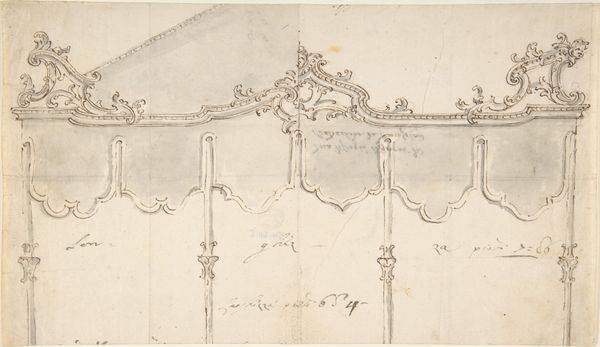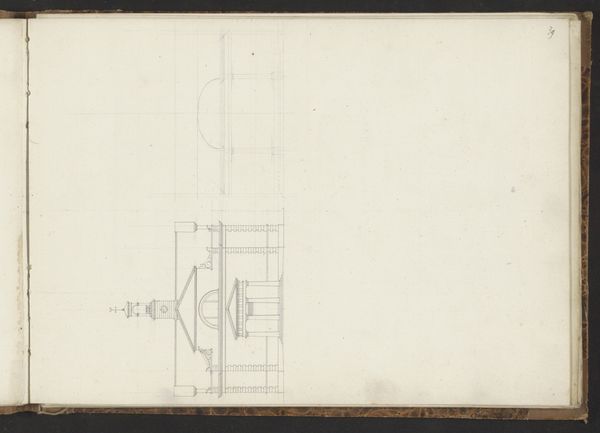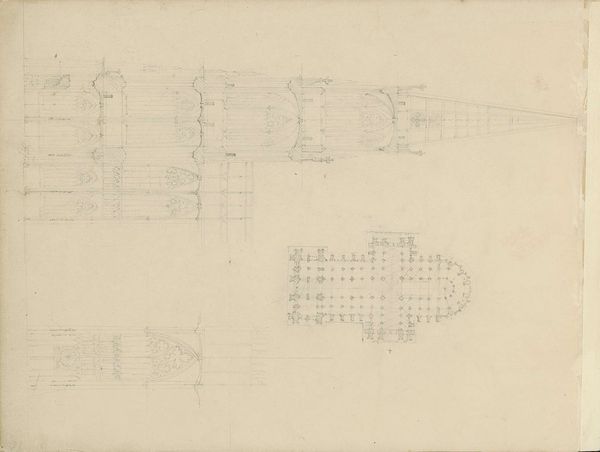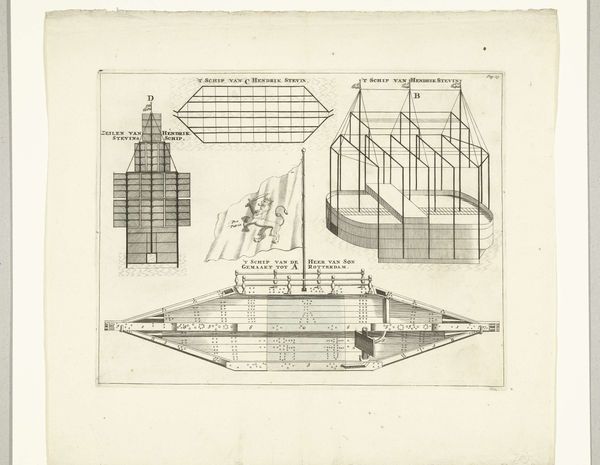
drawing, paper, watercolor
#
drawing
#
landscape
#
perspective
#
paper
#
watercolor
#
coloured pencil
#
geometric
#
watercolour illustration
#
watercolor
Copyright: Rijks Museum: Open Domain
Editor: So this is *Brug*, dating from between 1825 and 1907, by Willem Springer Jr. It's a drawing done with watercolor on paper, depicting different views of a bridge. It feels very technical, almost like an architectural plan. What do you make of it? Curator: It’s fascinating how Springer treats the bridge not as an aesthetic object, but as a material construction, an assemblage of wooden components. The drawing emphasizes process – how the bridge is built, how its parts connect. Look at the multiple views, revealing the bridge’s structure from different angles. How does this breakdown change your initial impression? Editor: I see what you mean! At first I thought it was just a straightforward landscape sketch, but now I realize it’s really about understanding the bridge’s physical being. What’s interesting is that the watercolors feel so delicate, yet they’re depicting a rather robust structure. Curator: Precisely. It makes you think about the labor involved. The work reduces the grand subject to constituent material components on paper, flattening cultural and economic networks into line and tone. I wonder about Springer’s choice of watercolor; why represent a piece of infrastructure with a material so often associated with leisure painting? Editor: I didn't even consider the contradiction between the subject and medium! Now that you point it out, the artist's perspective on industrialization makes me more curious. It invites questions on class division and consumerism from that time period, topics that were new to me previously. Thank you! Curator: Indeed! By bringing attention to the tangible materials and methods, we begin to interpret artwork beyond mere aesthetic taste.
Comments
No comments
Be the first to comment and join the conversation on the ultimate creative platform.
